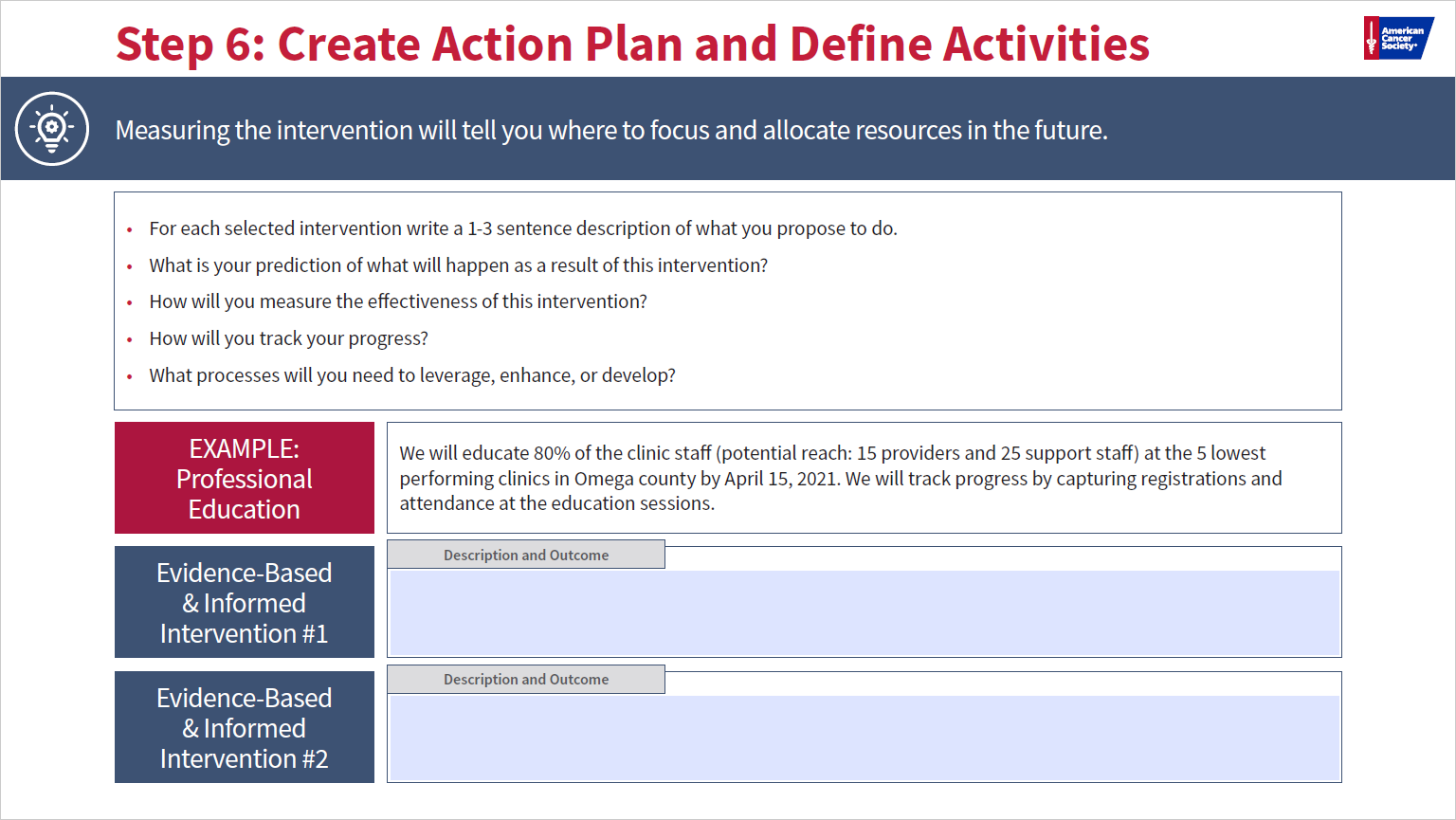Define Evidence-Based and Informed Interventions
Now that you have selected your evidence-based interventions and aligned them with your aim statement goals and audiences, it is time to define your selected interventions that are specific to your project.
Start by defining one intervention at a time. This step will help you to clarify the desired outcomes to make them more specific and actionable.
- For each intervention, write a 1-3 sentence description of the measurable activity that you propose to do. Refer to the evidence-based and informed intervention tool to see what measurements may be helpful for the interventions that you chose.
Consider these questions for each intervention:
- What is your prediction of what will happen as a result of this intervention?
- How will you measure the effectiveness of this intervention?
- How will you track your progress?
- What process will you need to leverage or enhance/develop?
Be sure that each outcome that you list in your action plan is a SMART goal (Specific, Measurable, Achievable, Relevant, and Time-bound). Knowing if the intervention was successful will let you know where to focus in the future and where to allocate resources.
You will want to repeat this process for each evidence-based and informed intervention that you selected to include in your action plan.
EXAMPLE: Professional Education Intervention: We will compile clinic-level data for a select number of clinic sites to determine those with the lowest screening rates. Then we will educate primary care physicians, physician assistants, and clinic staff at the designated clinics on how to discuss screening options and eligibility with patients.
The following image provides a visual guide to Step 6. Click on the image to download a fillable PDF form.

